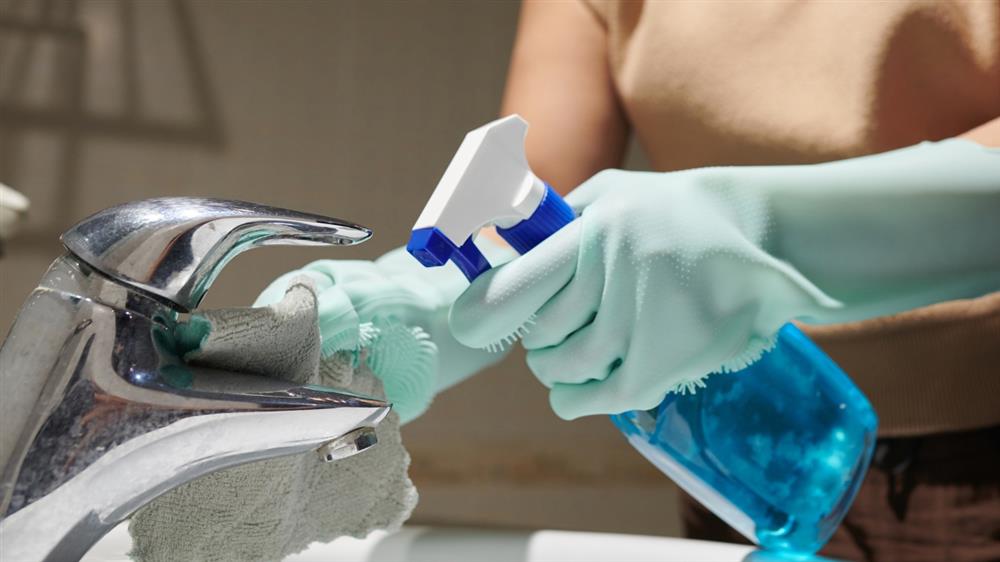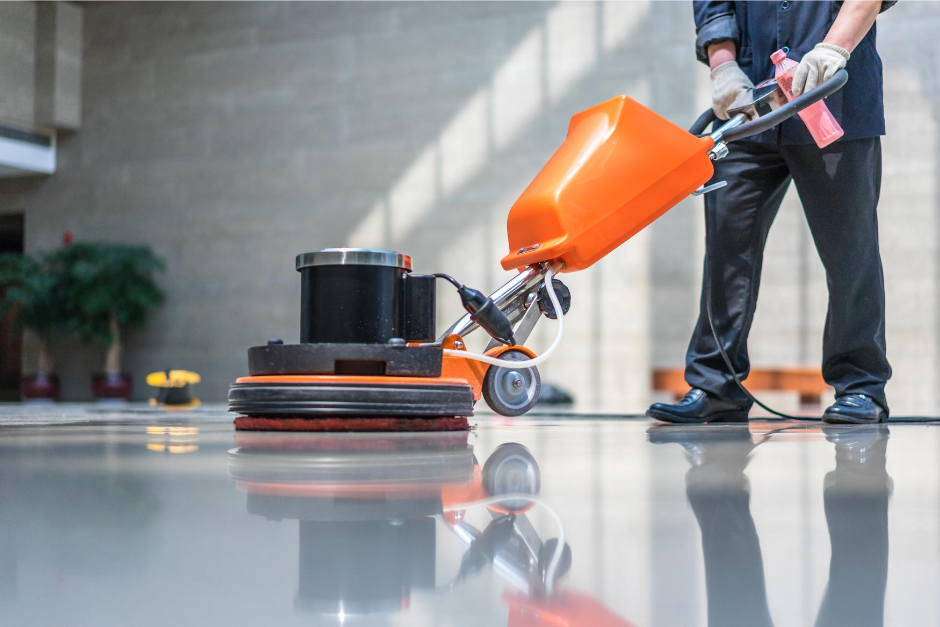In today’s world, environmental consciousness is more important than ever. As we become increasingly aware of the impact our daily habits have on the planet, more people are looking for ways to minimize their carbon footprint. One area where this shift is particularly noticeable is in the realm of cleaning and home maintenance. Traditionally, cleaning products were laden with harsh chemicals that not only posed health risks but also contributed to pollution and environmental degradation. However, with the rise of eco-friendly alternatives, it’s now easier than ever to clean and maintain your home in a way that benefits both your living space and the environment.
In this article, we will explore everything you need to know about eco-friendly cleaning and maintenance, including why it’s important, how to get started, the best products to use, and some practical tips to make your home cleaner and greener.
1. Why Eco-friendly Cleaning Matters
Traditional cleaning products often contain chemicals that can harm both our health and the environment. Ingredients such as ammonia, chlorine bleach, and phosphates can irritate the skin, eyes, and respiratory system, while also polluting the air and waterways. These toxic substances are washed down the drain after use, often ending up in our oceans, rivers, and lakes, where they can harm aquatic life and disrupt ecosystems.
In contrast, eco-friendly cleaning products are made from natural ingredients that are biodegradable, non-toxic, and free from harmful chemicals. These products are designed to clean effectively while minimizing their environmental impact. Using eco-friendly cleaning solutions reduces exposure to harmful substances, promotes better indoor air quality, and helps protect the planet for future generations.
2. Getting Started with Eco-friendly Cleaning
Transitioning to eco-friendly cleaning and maintenance doesn’t have to be overwhelming. With a few simple changes, you can create a more sustainable home cleaning routine that aligns with your values. Here’s how to get started:
a) Declutter Your Cleaning Arsenal
Begin by taking an inventory of the cleaning products you currently use. It’s likely that your cleaning cabinet is filled with an array of bottles, sprays, and wipes—many of which may contain unnecessary chemicals. Start by sorting through these products and eliminating those that are harmful to your health or the environment. Look for products labeled “non-toxic,” “biodegradable,” and “cruelty-free” as these are typically better for both you and the planet.
b) DIY Eco-friendly Cleaning Solutions
One of the simplest and most cost-effective ways to switch to eco-friendly cleaning is to make your own cleaning solutions using ingredients that are likely already in your kitchen. Common natural cleaning ingredients like vinegar, baking soda, lemon juice, and essential oils can be combined to create powerful, non-toxic cleaners that work just as well as store-bought products.
For instance, a mixture of white vinegar and water can be used as a natural all-purpose cleaner for surfaces, while baking soda can be sprinkled on countertops or in sinks to scrub away grime. Essential oils like lavender, tea tree, or eucalyptus not only add a pleasant fragrance but also provide antimicrobial properties.
c) Choose Eco-friendly Store-bought Products
If DIY cleaning solutions aren’t for you, there is an ever-growing selection of eco-friendly commercial cleaning products on the market. Look for brands that prioritize sustainability, transparency, and responsible sourcing. Many eco-friendly cleaning products come in recyclable or biodegradable packaging, further reducing their environmental footprint. When shopping for these products, consider checking certifications like Green Seal or EcoLogo, which indicate that the products meet rigorous environmental standards.
3. Best Eco-friendly Cleaning Products
There are a variety of eco-friendly products available for all your cleaning needs. Here are some of the most popular and effective options:
a) All-Purpose Cleaners
An eco-friendly all-purpose cleaner is an essential item in any green cleaning routine. Look for plant-based formulas that are free from artificial fragrances, dyes, and harsh chemicals. These cleaners can be used on countertops, tables, sinks, and other hard surfaces without the risk of toxic residue.
b) Glass Cleaners
Traditional glass cleaners often contain ammonia, which can be harmful to your respiratory system. Eco-friendly glass cleaners, on the other hand, use natural ingredients like vinegar or citric acid to leave your windows sparkling without the harsh fumes. Alternatively, a simple mixture of equal parts water and vinegar can work wonders as a streak-free glass cleaner.
c) Floor Cleaners
Whether you have hardwood, tile, or laminate floors, there are eco-friendly floor cleaners available to keep your surfaces gleaming. Look for products that are made with plant-based ingredients and avoid those with synthetic fragrances or chemicals that can damage your floors or contribute to indoor air pollution.
d) Laundry Detergent
Eco-friendly laundry detergents are formulated with biodegradable ingredients that are gentler on the environment and your skin. These detergents are often free from phosphates, parabens, and synthetic fragrances, which can irritate sensitive skin and pollute water systems. Many eco-friendly brands also offer concentrated formulas, so you can use less product per load, further reducing waste.
e) Dishwashing Liquids
Eco-friendly dishwashing liquids are designed to clean effectively without harsh chemicals. Most of these products use plant-based surfactants that break down grease and food particles while remaining safe for the environment. Look for biodegradable, phosphate-free options to reduce water pollution.
4. Sustainable Home Maintenance
In addition to eco-friendly cleaning products, there are several sustainable practices you can implement in your home to maintain a cleaner, greener environment. Here are some ideas:
a) Reduce Water Usage
Water conservation is a key component of eco-friendly home maintenance. Simple actions such as using a low-flow showerhead, fixing leaky faucets, and using a broom instead of a hose to clean driveways or sidewalks can reduce your water consumption. Additionally, consider using a rain barrel to collect rainwater for outdoor cleaning tasks or watering plants.
b) Energy-efficient Appliances
Energy-efficient appliances, such as washing machines, dishwashers, and refrigerators, use less energy and water than conventional models. When choosing new appliances, look for the ENERGY STAR label, which indicates that the product meets energy efficiency standards set by the U.S. Environmental Protection Agency (EPA).
c) Natural Pest Control
Traditional pest control products often contain harmful chemicals that can pose risks to both humans and pets. Instead of reaching for chemical-laden sprays, consider using natural pest control methods. For instance, essential oils such as peppermint, citronella, and eucalyptus can deter insects without posing a threat to your health. Additionally, introducing beneficial insects like ladybugs or nematodes to your garden can help keep pests under control naturally.
d) Eco-friendly Paints and Finishes
When it’s time to refresh your home with a new coat of paint or finish, opt for low-VOC (volatile organic compound) paints. These paints are made with fewer harmful chemicals, reducing both indoor air pollution and environmental impact. Low-VOC paints also offer a wide range of colors and finishes, so you don’t have to sacrifice style for sustainability.
e) Green Cleaning Tools
Another important consideration for eco-friendly cleaning is the cleaning tools you use. Avoid disposable products like paper towels and opt for reusable microfiber cloths, which are effective at trapping dust and dirt without the need for chemicals. Choose natural sponges, scrub brushes with wooden handles, and reusable mops to further reduce waste in your cleaning routine.
5. Tips for Maintaining an Eco-friendly Home
Adopting eco-friendly cleaning and maintenance practices requires a mindset shift toward sustainability. Here are a few additional tips to help you stay on track:
-
Buy in Bulk: Purchasing cleaning products in larger quantities reduces packaging waste and saves you money in the long run.
-
Repurpose Old Items: Instead of buying new cleaning tools, consider repurposing old towels, cloths, or newspapers for cleaning.
-
Store Cleaners Properly: Properly storing your eco-friendly cleaning products ensures they last longer and maintain their effectiveness.
-
Recycle and Compost: Ensure that you recycle all appropriate packaging and compost organic waste whenever possible.
Conclusion
Eco-friendly cleaning and maintenance are not just about using the right products—they are about cultivating a more sustainable lifestyle. By choosing non-toxic, biodegradable cleaners and adopting green practices in your home, you can reduce your environmental footprint, improve your indoor air quality, and create a healthier living space. Whether you’re cleaning with homemade solutions or using eco-friendly commercial products, every small step you take contributes to a cleaner, greener planet. The key is to be mindful of the choices you make, understanding that each action you take is part of a larger movement toward sustainability.



